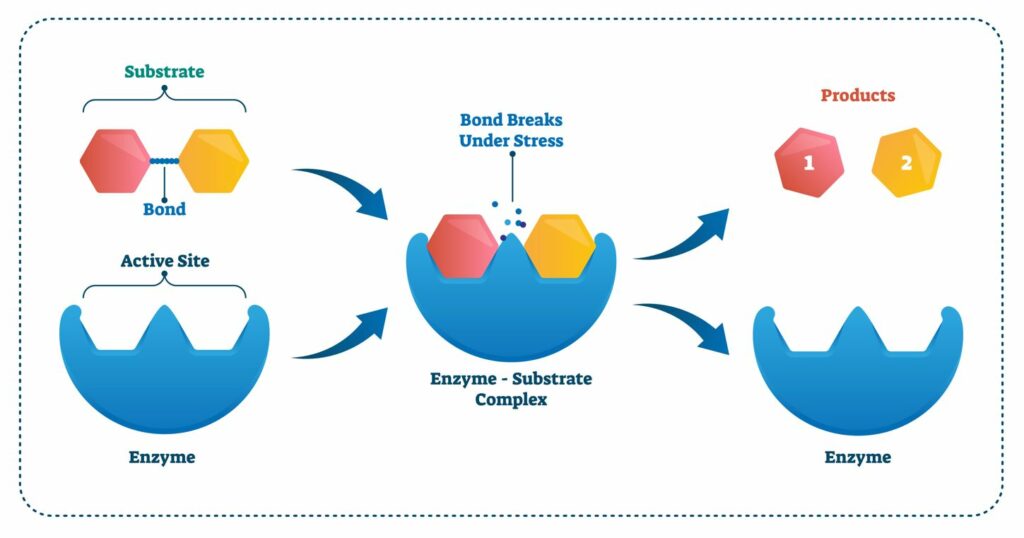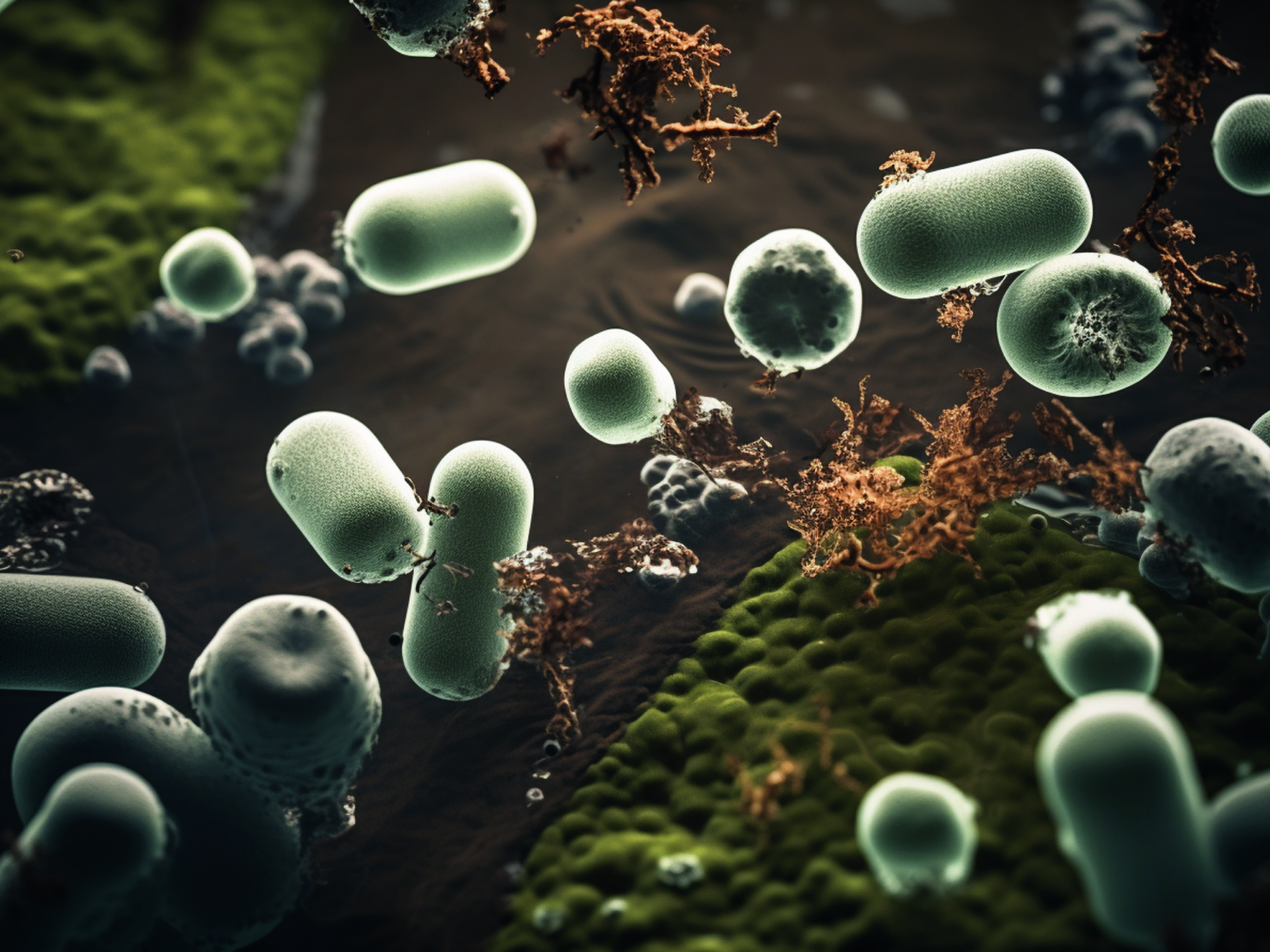SlurryForSoil™ transforms slurry, including the crust and sludge, into a biofertiliser with a consistent texture. It means that slurry needs stirring less often, saving both time and fuel, as well as making applications quicker (with fewer blockages) and evenly spread. But how does SlurryForSoil™ work?
The short answer is that the 18 different fungi and bacteria in SlurryForSoil™ all naturally produce enzymes that break down complex organic materials into simpler ones.
In soil, where they are usually found, the microbes are breaking down complex organic matter like leaves and other organisms, and consume the resulting simpler organic compounds – the carbohydrates, proteins and minerals etc. It’s a process that’s key to nutrient cycles.
When you treat your slurry with SlurryForSoil™, the same process is happening. Having been brought out of dormancy with the warm water you add when preparing the product, the microbes (or bugs, as they are sometimes known) start producing enzymes to break down potential food sources, in this case the slurry, harvesting the constituent nutrients and energy.
What is an enzyme?
Enzymes are proteins which speed up chemical processes – either breaking down (decomposing) compounds or joining together (synthesising) compounds. Almost all the processes which happen in a plant or animal– from photosynthesis to respiration – depend on enzymes.
All enzymes have an optimum temperature and pH, and a range in which they work. Beyond these ranges, the structure of the enzyme changes and it is no longer the right shape to perform its function.
Enzymes are specific as to which chemical reactions they speed up. In terms of SlurryForSoil™, this is important. We’ve included microbes that are known to produce enzymes that break down the types of substances found in slurry.

What types of enzymes do the microbes in SlurryForSoil™ produce?
The bacteria and fungi in SlurryForSoil™ produce a wide range of enzymes. Some like cellulase and the ligninases are specific to plant-based materials. While others, such as protease, amylase and lipase break down substances found in all organisms.
Cellulase breaks down the main substance in plant wall cells, cellulose, where its purpose is to give the plant’s structures e.g. stems, leaves etc, strength. Cellulose is made up of carbon, hydrogen and oxygen atoms and cellulase turns cellulose into simpler sugars, known as monosaccharides, such as glucose.
Similarly, ligninases are enzymes that break down lignin – another compound found in plant wall cells contributing to rigidity. Ligninases tend to be produced by fungi, which makes them crucial ingredients in SlurryForSoil™.
The microbes in SlurryForSoil™ also produce protease which break the peptide bonds of proteins, amylase which targets carbohydrates and lipase for fats – it turns triglycerides into free fatty acids and glycerol.
There’s also chitinase which deals with one of the most abundant aminopolysaccharide polymers in nature (it’s the material that gives strength to exoskeletons of insects and the cell walls of fungi, for example), nitroreductase for some those compounds containing nitrogen, as well as xylanase, hemolysin, lipopeptides (eg tauramamide) phospholipase, glucanases and more.
The effect of SlurryForSoil™’s microbes and their enzymes
The net effect of these enzymes (given a little time) is a slurry that is well on its way to being decomposed. Grass and the organisms in your soil, have much less work to do in order to access, and use, the nutrients, making it a much more effective biofertiliser than untreated slurry.
The consistent texture makes it easier to achieve even applications, helping to ease grassland management. It also helps speed up the rate of absorption into the soil, reducing the likelihood of nutrients leaching or running off into water courses.

